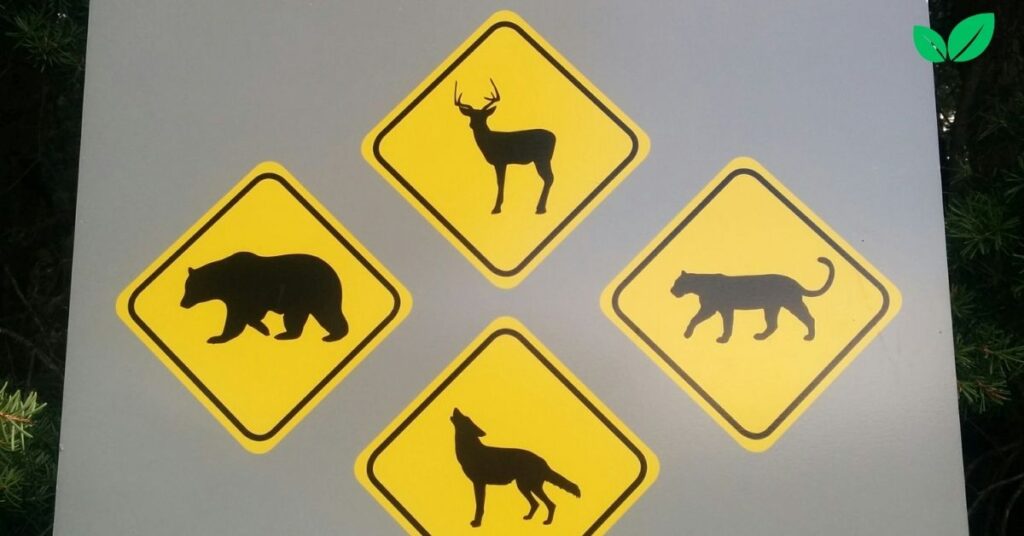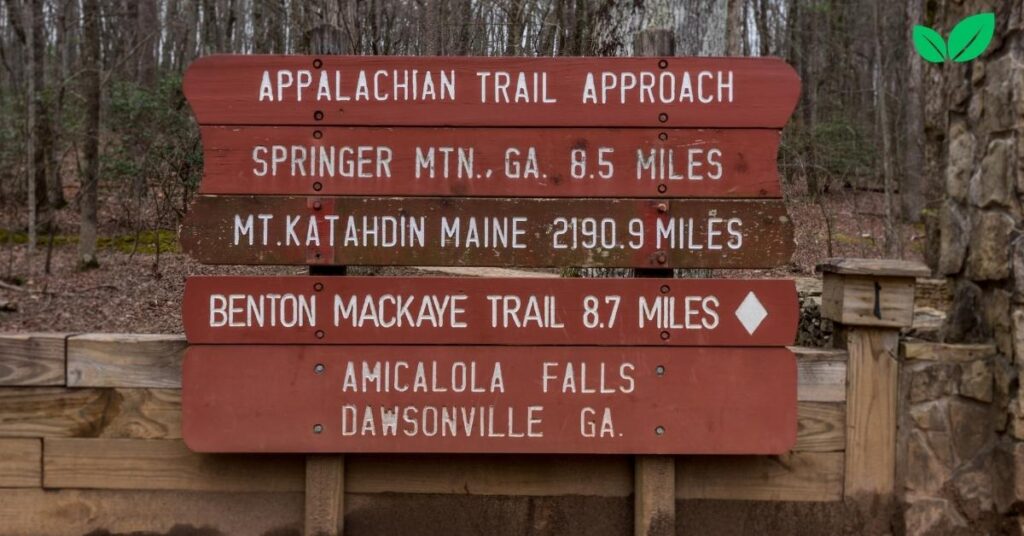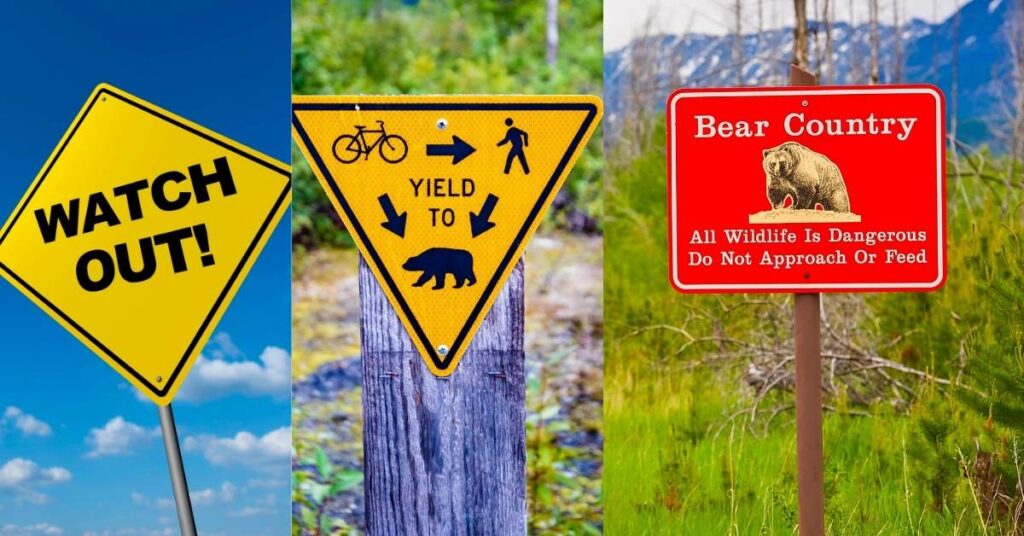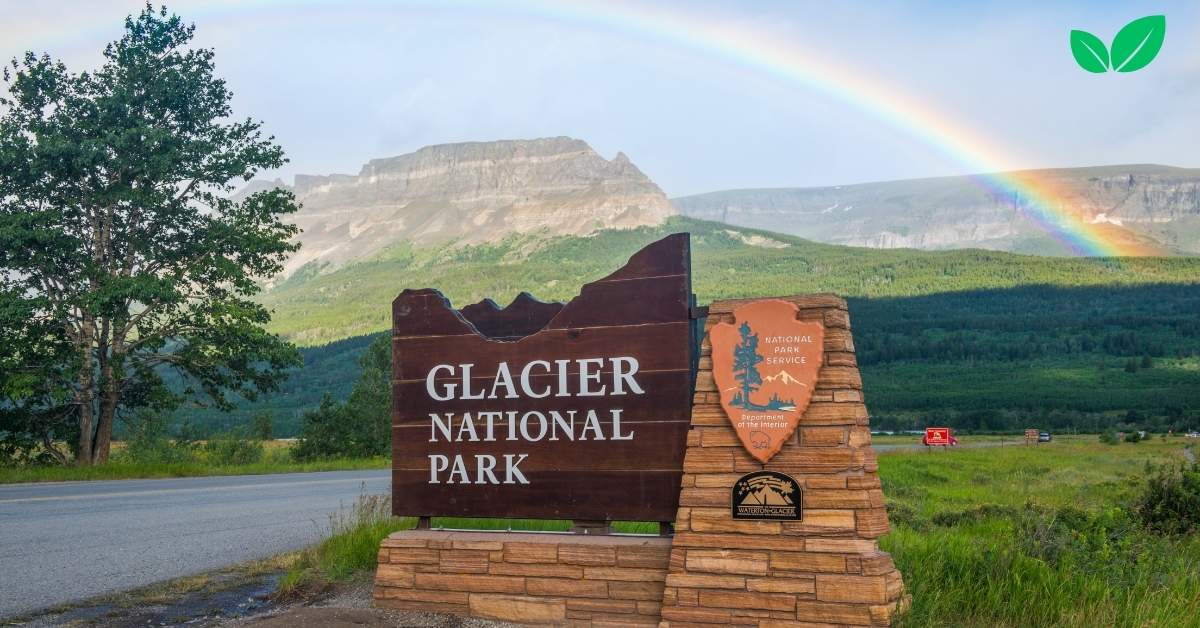National parks are essential natural reserves that protect biodiversity, ecosystems, and cultural heritage. These areas attract millions of visitors each year, offering opportunities to explore nature and engage with the environment. One of the most overlooked yet vital elements of the national park experience is signage. National park signs are more than mere navigational tools; they play a key role in promoting conservation, enhancing visitor safety, and educating the public about the natural world.
This article delves into the importance of national park signs, examining their design, purpose, and contribution to environmental education and preservation. Through an exploration of different types of signs and their impact on visitor behavior, we will also highlight how they contribute to sustainable tourism and ecosystem protection.
1. The Role of Signs in National Parks
Signs in national parks serve as a critical communication tool between park management and visitors. These signs are often the first point of contact for visitors, offering essential information about the park’s layout, safety protocols, and key points of interest. Effective signage is fundamental to ensuring that visitors have a safe, enjoyable experience while minimizing their impact on the environment.

1.1. Guiding Visitors and Protecting Nature
The primary function of national park signs is to guide visitors. Trail markers, directional signs, and park maps help visitors navigate safely through the park’s landscapes. These signs are crucial in preventing visitors from getting lost, which can lead to unintentional harm to delicate ecosystems. For example, a clear trail marker helps keep hikers on established paths, reducing the likelihood of trampling on sensitive vegetation or disturbing wildlife habitats.
- Trail Signs: These provide essential guidance for hikers, indicating trailheads, distances, and difficulty levels. Trail signs help protect the environment by keeping visitors on designated paths, reducing erosion and habitat disturbance.
- Entrance Signs: National park entrance signs are often iconic and are used to mark the boundaries of the park, offering visitors a sense of arrival and anticipation for the adventure ahead.
- Informational Signs: These provide critical safety information, such as warnings about wildlife encounters, weather conditions, or hazardous areas within the park.
1.2. Safety and Environmental Awareness
Safety is another vital aspect of national park signage. Parks often feature diverse ecosystems that can pose risks to unprepared visitors. From warning about steep terrain to providing instructions for encounters with wildlife like bears or elk, safety signs help mitigate the risks associated with exploring natural environments.
- Wildlife Warning Signs: These signs educate visitors about the presence of dangerous animals and how to behave to avoid harm. For instance, signs in Bear Country will advise visitors to store food properly and maintain a safe distance from wildlife.
- Hazard Signs: National parks often contain natural hazards such as cliffs, rivers, or geothermal features. Signs warning of potential dangers, like unstable ground or fast-moving water, help prevent accidents and protect visitors from harm.
2. The Design and Evolution of National Park Signs
The design of national park signs is not only functional but also an important part of the park’s visual identity. Over the years, the design of park signs has evolved, reflecting changing priorities in conservation, aesthetics, and visitor engagement.

2.1. The Aesthetic of National Park Signs
National park signs are typically designed to blend harmoniously with the natural surroundings. This design philosophy is rooted in the broader conservation ethic of preserving the natural landscape. The materials used in sign construction, such as wood or stone, often reflect the natural environment, ensuring that the signage is aesthetically pleasing and minimally invasive.
- Material Choices: Historically, park signs were made from durable materials like timber, stone, or metal, chosen for their ability to withstand harsh outdoor conditions. These materials also help signs blend into their environment, enhancing the sense of being in nature.
- Typography and Graphics: The typography used in national park signage is typically clear and easy to read, designed to be legible from a distance. In many U.S. national parks, the “National Park Service” font, inspired by hand-carved wooden signs, is a classic design choice that reflects the history and tradition of the park system.
2.2. The Evolution of Signage: From Simple Markers to Interactive Tools
In the early days of national parks, signs were often simple markers providing basic information. However, as the role of national parks expanded to include education and conservation, the complexity and functionality of signage evolved.
- Interpretive Signs: These signs offer in-depth information about the natural and cultural history of the area. They might explain the geology of a mountain range, the history of indigenous peoples in the region, or the ecological role of a particular species. Interpretive signs play a vital role in environmental education, fostering a deeper understanding and appreciation of the park’s natural resources.
- Interactive and Digital Signage: Modern national park signs are increasingly incorporating technology to enhance visitor engagement. Interactive kiosks, QR codes, and augmented reality features allow visitors to access multimedia content, such as videos or 3D models, enriching their understanding of the park.
3. Types of National Park Signs and Their Importance
National parks use a variety of sign types, each serving a unique purpose in promoting visitor engagement, education, and environmental stewardship.

3.1. Trail Markers and Wayfinding Signs
Trail markers are one of the most common types of signs in national parks. These signs are critical for guiding visitors through the park while minimizing their environmental impact.
- Importance for Conservation: By clearly marking trails, these signs help protect delicate ecosystems. When visitors stay on designated paths, they reduce the risk of disturbing wildlife, causing soil erosion, or damaging plant life.
- Types of Trail Markers: In addition to basic directional signs, trail markers may indicate the difficulty level of a trail, expected time to complete, or notable features along the route.
3.2. Interpretive and Educational Signs
Interpretive signs provide visitors with a deeper understanding of the natural, cultural, and historical aspects of the park. These signs are often placed near significant landmarks or ecosystems to explain their importance and encourage environmental stewardship.
- Ecological Education: Educational signs in national parks often focus on the flora and fauna unique to the area. For example, a sign in a wetland area might explain the role of amphibians in the ecosystem, while a sign in a forested area could highlight the importance of tree species in maintaining biodiversity.
- Cultural and Historical Context: In addition to natural features, national parks often preserve important cultural and historical landmarks. Signs placed near archaeological sites, historic buildings, or indigenous territories provide visitors with context about the people who have lived in and shaped the landscape over time.
3.3. Safety and Regulation Signs
Safety signs are crucial in protecting both visitors and the environment. They provide important instructions for navigating potentially dangerous areas and adhering to park regulations.
- Wildlife Safety: Signs that warn about wildlife, such as bears or mountain lions, help visitors understand the risks and how to minimize their impact on the animals’ natural behaviors. These signs often emphasize the need for responsible practices, such as not feeding wildlife or properly storing food.
- Fire Danger and Environmental Regulations: Many parks are prone to wildfires, particularly during dry seasons. Fire danger signs alert visitors to current risks and restrictions, such as fire bans or rules for camping stoves. These signs play a vital role in preventing human-caused wildfires.
4. The Environmental Impact of National Park Signage
While national park signs serve essential functions in guiding and educating visitors, their environmental impact must also be considered. The materials used, the placement of signs, and their potential effects on wildlife all contribute to their overall sustainability.

4.1. Sustainable Materials and Design
To reduce their environmental impact, many national parks are adopting sustainable practices in the design and construction of their signs. Using materials that are durable, renewable, and eco-friendly helps minimize waste and ensures that the signs blend into the natural landscape.
- Recycled and Eco-Friendly Materials: Increasingly, parks are using recycled materials, such as reclaimed wood or recycled plastic, to create signs. This reduces the need for new resources and lowers the carbon footprint associated with manufacturing.
- Solar-Powered Signage: Some parks are now using solar-powered signs and lights, particularly for trailheads or entrances that require illumination at night. This reduces the need for electrical infrastructure and minimizes the park’s energy use.
4.2. Wildlife and Ecological Considerations
The placement of signs can have a significant impact on local wildlife. Careful planning is required to ensure that signs do not disrupt animal habitats or migratory patterns.
- Minimizing Disturbance to Wildlife: Signs should be placed in areas where they do not interfere with animal movement or nesting sites. For example, placing signs away from sensitive habitats, such as bird nesting areas or amphibian breeding grounds, helps protect these species from disturbance.
- Visitor Education on Wildlife: Educational signage can also help visitors become more aware of their impact on wildlife. Signs explaining the importance of not feeding animals, keeping a safe distance, and respecting wildlife habitats contribute to a more informed and responsible visitor experience.
5. National Park Signs as Tools for Conservation
In addition to their practical functions, national park signs play an important role in promoting conservation. By raising awareness about environmental issues and encouraging sustainable behaviors, these signs contribute to the long-term preservation of natural resources.

5.1. Promoting Leave No Trace Principles
Many national parks use signage to promote the Leave No Trace (LNT) principles, which encourage visitors to minimize their impact on the environment. Signs reminding visitors to pack out trash, stay on designated trails, and respect wildlife help reduce human impacts on fragile ecosystems.
- Leave No Trace Signage: LNT signs are often placed at trailheads, campsites, and other high-traffic areas. They provide simple and clear guidelines for visitors on how to reduce their environmental footprint while enjoying the park. These signs emphasize the importance of actions such as carrying out all waste, minimizing campfire impacts, respecting wildlife, and leaving what they find in nature.
5.1.1. Behavioral Impact of LNT Signage
Research has shown that visible reminders like Leave No Trace signs can significantly influence visitor behavior. When visitors are constantly reminded of environmental guidelines, they are more likely to follow the principles, leading to reduced litter, lower instances of trail erosion, and less disturbance to wildlife. This type of signage empowers visitors to be active participants in conservation efforts.
5.2. Encouraging Sustainable Tourism
Sustainable tourism in national parks relies on minimizing environmental degradation while maximizing visitor satisfaction and education. Signs play a crucial role in achieving this balance by educating visitors about park-specific rules, seasonal changes, and the importance of preserving the park’s natural beauty.
- Visitor Capacity Management: Signs can inform visitors about areas that may be overcrowded or at risk of overuse. By directing people to less-trafficked areas, parks can reduce pressure on heavily used sites while allowing visitors to explore more of the park.
- Sustainability Messages: National park signs often contain messages encouraging visitors to use water responsibly, avoid damaging vegetation, and follow designated routes to minimize their impact. These messages help integrate sustainability into the visitor experience, making environmental responsibility a core part of their trip.
5.3. Raising Awareness About Conservation Efforts
Many parks use signs to inform visitors about ongoing conservation projects. Whether it’s an initiative to restore wetlands, protect endangered species, or reforest degraded areas, signage educates the public about the efforts being made to preserve these environments. This transparency fosters a deeper connection between visitors and the park, potentially motivating them to support conservation efforts.
- Endangered Species Signage: Signs that highlight endangered species, such as a specific bird or plant found in the park, raise awareness and help visitors appreciate the importance of protecting these vulnerable species. They may also explain how certain human behaviors, such as staying on trails or not picking wildflowers, can help these species survive.
- Restoration Projects: Signs placed near restoration areas often detail why certain sections of the park are closed to visitors or why specific ecosystems are being rehabilitated. These signs not only provide information but also highlight the park’s active role in restoring habitats and promoting ecological health.
6. The Future of National Park Signage
As technology evolves and the demand for sustainable tourism grows, national park signage is also adapting. The future of park signs will likely involve a combination of traditional materials and digital innovation to enhance visitor experiences while promoting conservation.

6.1. Integrating Technology with Traditional Signage
In recent years, national parks have begun to integrate technology into their signage, offering new ways for visitors to engage with the natural world. These advancements allow for more dynamic, interactive experiences without increasing the physical footprint of signs in the park.
- QR Codes and Digital Resources: Many national parks are incorporating QR codes into their signs, allowing visitors to access additional information via their smartphones. Scanning a code on a sign can direct visitors to websites, videos, or audio guides that offer in-depth explanations about the area’s ecology, history, or wildlife. This reduces the need for extensive physical signage while providing a richer educational experience.
- Augmented Reality (AR): Some parks are experimenting with augmented reality applications, where visitors can use their phones or AR glasses to see additional information overlaid on the real-world landscape. For example, pointing a phone at a specific rock formation might trigger a digital animation showing how the landscape evolved over millions of years. This technology offers new opportunities for immersive learning without overwhelming the natural environment with too much signage.
6.2. Eco-Friendly Innovations in Signage Design
As national parks strive to reduce their environmental impact, future signage will likely prioritize eco-friendly materials and energy-efficient technologies. This trend is part of a broader movement toward sustainability in park infrastructure.
- Biodegradable Materials: Future signage could be made from biodegradable materials, ensuring that signs themselves do not contribute to long-term waste in the environment. These signs might be used for temporary installations, such as during a park restoration project or for seasonal changes.
- Solar-Powered Signs: Solar energy is increasingly being used to power signs in remote areas where traditional electricity is not feasible. Solar-powered lights for nighttime visibility or digital displays can make signage more accessible without increasing the park’s carbon footprint.
7. National Park Signage and Community Engagement
Beyond guiding visitors, national park signs also play a role in community engagement. They can inform the public about volunteer opportunities, upcoming events, and ways to get involved in the park’s conservation efforts.

7.1. Educational Programs and Volunteer Recruitment
Signs that advertise educational programs, guided tours, or citizen science projects encourage visitors to participate more actively in the park’s mission. By promoting these opportunities, parks can build stronger connections with their visitors, turning casual tourists into engaged supporters of conservation.
- Volunteer Opportunities: Many national parks rely on volunteers for trail maintenance, habitat restoration, and visitor education. Signs that promote volunteer opportunities help parks recruit new volunteers while fostering a sense of stewardship among visitors.
- Citizen Science Initiatives: Some parks use signage to encourage visitors to participate in citizen science projects, such as wildlife monitoring or plant surveys. These projects allow visitors to contribute valuable data to conservation research while deepening their connection to the park.
7.2. Building Relationships with Indigenous Communities
Many national parks are located on lands that hold significant cultural importance for indigenous communities. Signs that acknowledge this history and provide information about the cultural significance of the land help visitors appreciate the park’s human heritage as well as its natural beauty.
- Cultural Heritage Signage: These signs often explain the traditional uses of the land by indigenous peoples, highlighting their relationship with the environment and the importance of protecting these lands. Involving indigenous communities in the creation of these signs ensures that the information is accurate and respectful.
- Bilingual and Multilingual Signs: In parks located in regions with indigenous populations, providing bilingual or multilingual signs can help foster inclusivity and respect for the local culture. Signs written in both English and the language of the local indigenous group offer visitors a more complete understanding of the park’s history and significance.
8. Conclusion: The Vital Role of National Park Signs
National park signs are far more than functional wayfinding tools; they are essential elements of the park experience that promote safety, conservation, and environmental education. These signs guide visitors through delicate ecosystems, ensuring that they can explore and enjoy the natural world while minimizing their impact.
From traditional wooden trail markers to cutting-edge digital displays, national park signs are constantly evolving to meet the needs of modern visitors and the challenges of environmental preservation. As parks continue to adopt sustainable practices, signage will play an increasingly important role in fostering a sense of responsibility and stewardship among visitors.
In a world where natural spaces are increasingly under threat, the humble national park sign serves as a reminder of our collective duty to protect these precious environments. By guiding visitors, educating the public, and promoting conservation, these signs help ensure that national parks remain vibrant, thriving ecosystems for generations to come.
9. FAQs About National Park Signs

9.1. Why are national park signs important?
National park signs are crucial for guiding visitors, ensuring safety, and promoting conservation. They help visitors navigate trails, understand the park’s history and ecology, and minimize their environmental impact.
9.2. What materials are national park signs made from?
Traditional national park signs are often made from wood, stone, or metal. Today, parks are increasingly using eco-friendly materials such as recycled plastic or biodegradable components.
9.3. How do signs contribute to conservation efforts in national parks?
Signs educate visitors about the environment, promote responsible behaviors, and raise awareness about ongoing conservation projects. By encouraging practices like Leave No Trace, signs help protect ecosystems.
9.4. Are digital signs becoming common in national parks?
Yes, many parks are integrating digital elements into their signage, such as QR codes and interactive displays. These technologies provide additional information without increasing the physical footprint of signs.
9.5. How do signs help protect wildlife in national parks?
Wildlife warning signs educate visitors on how to interact safely with animals, preventing harmful encounters and reducing the risk of disrupting animal behavior.
9.6. How can national park signs support indigenous communities?
National park signs can honor indigenous heritage by providing bilingual or multilingual information, sharing cultural knowledge, and acknowledging the historical significance of the land.
Read More: Wheeler Ridge: Exploring Its Environmental Niche, Ecological Importance, and Conservation Efforts

